- Home
- Rick Mofina
Vengeance Road Page 5
Vengeance Road Read online
Page 5
“You’re Jack Gannon, the reporter?”
“That’s me. And you are?”
“Mary Peller, and I really need your help, Mr. Gannon.”
“It’s Jack.” Gannon cleared a stack of justice reports from an extra chair for her. “How can I help you?”
“My daughter, Jolene, is missing.”
“Missing? How old is she?” Gannon fished a notebook from a pile, flipped to a fresh page.
“Twenty-six.”
“Twenty-six? What’s the story?”
What came next was a tale Gannon had heard before. Jolene’s dad walked out on them when Jolene was eleven. When Jolene hit her teens, Mary lost her to drugs and the street. A year ago, after Jolene nearly died from overdosing on bad drugs, she started going to church and decided, for the sake of her three-year-old son, Cody, that she had to get clean.
Jolene got a fast-food job, took night courses, and through a service, landed a junior motel manager position in Orlando.
“Jo was over the moon because it was her chance to start a new life. She wasn’t proud of the things she’d done to get drugs…” Mary Peller’s voice trailed off and she stopped to regain her composure. “We don’t have much money, Mr. Gannon. Jo left last week on the bus to Florida. She was supposed to set herself up then return for Cody. But I haven’t heard from her.”
“Nothing?”
“Not a word. She never arrived. She should’ve been there days ago. It’s like she’s vanished.”
“Did you call the police?”
“Police here, police in Florida, social workers. Nobody cares.”
“You consider hiring a private detective?”
“I can’t afford it.”
She passed her folder to him.
“I was hoping you could do a story, it might help me find her. You’re good at finding things out. Please, Mr. Gannon, you’re my only hope.”
Gannon looked at the folder’s contents, beautiful pictures of Jolene and Cody, some letters, personal papers, numbers, addresses, more pictures. One photo stopped him.
Man, she looks like Cora in this one.
A shadow fell over them. When Gannon lifted his head, Nate Fowler was there.
“Excuse us, ma’am,” Fowler said, turning to Gannon. “I need you in my office, now.”
Fowler left.
Gannon closed Mary Peller’s folder, gave her his card and stood.
“Can you leave this file with me?”
“Yes.”
“I won’t guarantee I’ll do a story. But let me look it over. I have to go. One way or the other, I’ll call you.”
Mary Peller took his hand and shook it.
“Thank you. Thank you for listening.”
“Jeff will show you out.”
In Nate Fowler’s office, Ward Wallace’s haggard face conveyed the climate. Gannon had stepped into a shit storm.
“Shut the door.” Nate twisted a rubber band around his fingers while staring at Gannon.
“Jack, as managing editor of this paper I sit on the boards of many charitable organizations that do a lot of good work for this city. Did you know that Detective Karl Styebeck is also a board member of some of these groups?”
He didn’t know that.
“And did you know, Jack, that I was reminded of that fact this morning when I got a wake-up call from the publisher, who got a wake-up call from a police commander, who said your story was wrong?”
“Wrong?”
“He called it a fabrication and demanded a retraction.”
“You’ve got to be kidding.”
“Am I smiling?”
“My story’s not wrong.”
“It should’ve been verified before the presses rolled. I should have been called.”
“We called you, Nate,” Wallace said.
“I got in last night off a late flight from Los Angeles and had no messages.” Fowler glared at Wallace, then Gannon. “Give me your source’s name so we can confirm and stand by the story. Otherwise we run a retraction.”
Gannon swallowed, took quick stock of Fowler’s office, the citations, framed news pages, including Gannon’s for the Pulitzer nomination. There were photos of Fowler with city, state and federal politicians. His wife had a power job with the New York State attorney general’s regional office. His brother was married to the publisher’s daughter.
Fowler was a political player and Gannon didn’t trust him.
“I can’t give you my source’s name.”
Nate looked at Wallace then back at Gannon.
“You can’t? Did I hear you right?”
“My source has too much at stake.”
“And you don’t?” Fowler glared at him. “Do you have any documents supporting the story?”
“No.”
Nate Fowler glared at Ward Wallace then Gannon.
“Jesus. So we have nothing in our possession. No warrant, no affidavit, no court record?”
Gannon shook his head.
“Do you have a source or not, Jack?”
“I have a source, but I can’t give them up to anyone. I gave my word. You have to trust me.”
“The hell I do! As an employee conducting business for this company, you are required to advise your managers of your source, or be considered insubordinate.”
“Jack,” Wallace said, “just tell us who your source is and where they work.”
“I can’t. My source would lose more than their job.”
“Job?” Fowler said. “Let me tell you about jobs, Gannon. If we print a retraction, we rupture the paper’s credibility at a time of eroding readership. At a time of possible staff cuts. Do you understand what’s at stake here?”
“I do. I swear my story’s good.”
“Is it? Without so much as a thread of evidence, you’ve accused an outstanding member of this community of murder! A man recognized for putting his life on the line, a man who volunteers to help street people. Your story claims he killed a goddamn prostitute!”
“A human being. A troubled nursing student, that’s what she was.”
“A drug-addicted hooker.”
“My story’s not wrong, you have to trust me.”
“Trust you? We’re way beyond that.” Fowler thrust his finger at Gannon’s face, then the door. “You’re gone!”
“What do you mean?”
“I’m suspending you indefinitely, effective now and without pay.”
“My story’s not wrong, Nate.”
“Then give me your source.”
“I can’t.”
“Then get the hell out of my newsroom.”
11
Gannon left the Sentinel struggling to make sense of what had hit him.
Blood drummed in his ears as he walked through the parking lot to his car. He rested his arms on the Vibe’s roof, letting time pass as he contemplated the building and his options.
He had none.
He’d given his word that he would not give up his source to anyone. Not even his editors. There was too much on the line.
Sentinel workers were arriving. Oblivious to his trouble, some waved. As he watched them, Nate Fowler’s ominous words about staff cuts made his stomach tighten and he drove off.
Navigating through Buffalo’s downtown traffic, he dragged the back of his hand across his mouth, adrenaline still rippling through him.
The fact was Nate Fowler refused to believe his story. The guy had no respect for his own reporters. He didn’t care for the truth. He kowtowed to politics and could not be trusted with sources.
Gannon recalled the advice of Sean Allworth, the paper’s Washington bureau chief, when they’d teamed up last month for a story that never saw publication. It was on state and county real estate contracts.
Fowler had spiked it and that set Allworth off in one of their calls.
“Jack, never give that guy your sources. He’s a snake. When I broke that land development story last year, I had to give him my source. A week later, Fowler’s brot
her bought some key property. The whole thing stunk.”
Allworth said he’d heard rumors that Fowler was going to run for some state office, and through his wife, was cozy with big backdoor players. “He’ll give up your sources to build alliances. Be careful.”
A popular hero cop like Karl Styebeck could give Fowler a ton of community support, Gannon figured as he stopped at a 7-Eleven lot.
Okay, he was suspended, so now what?
He’d pursue the story on his terms, as an outcast.
Start at square one.
He made a call from a public pay phone and it was answered by the third ring.
“It’s Gannon, you read today’s paper?”
“Yup. Big story.”
“I need to see you.”
“All right, the usual spot, say, half an hour.”
He took the New York State Thruway south to Lackawanna, the former steel town, which was now harvesting the wind. When he got there, he entered the south section of Holy Cross Cemetery.
One of the area’s largest cemeteries, it held over one hundred thousand graves, including those of people who had built this part of the country, immigrants who’d helped dig the Erie Canal, or worked on Great Lakes steamers or in the steel mills.
A good place to bury secrets, he thought as he drove slowly along the graveyard’s eastern edge, to the Garden of Consolation. After parking, he sat on a bench near a stand of oak trees and waited.
Within ten minutes he saw a familiar Chev Impala stop some distance away. A woman got out and started toward him. A white woman about his age, dressed in a lavender T-shirt, dark blazer, jeans and navy leather flat shoes. Her auburn hair was pulled up in a neat bun.
This was Adell Clark, a former FBI agent.
Two years back, he’d covered a botched armored-car heist at a strip mall in Lewiston Heights. The FBI had been tipped to the robbery and moved to thwart it. Clark was on the scene and was shot twice. She returned fire, killing the two suspects, aged twenty and nineteen. They were brothers from Philadelphia.
In the days that followed, Clark agreed to be interviewed. He wrote a feature on the case and they’d kept in touch ever since.
Her recovery had been rough. A bullet was still lodged in her lower back, forcing her to walk a little slower than most people, or endure a lot of pain. “Pills make me loopy, so I never take them.” To this day, the full terms of her disability claim remained tied up in red tape.
Clark was a divorced mother of a little girl who needed expensive drugs to cope with a rare medical condition. They lived in a seventy-year-old two-bedroom house with a leaky roof on Parkview in Lackawanna where Clark ran a one-woman private-detective agency.
She used him as an investigative resource. And he used her. That’s how it was.
Clark lowered herself carefully onto the bench.
“So, Jack, talk to me. How’d it go?”
“I need you to reassure me that our information is solid, Adell.”
“This stays here with you, me and the dead,” she said.
“Of course.”
“After they found Bernice Hogan’s body, SP’s lead detectives called a multi-agency meeting with Buffalo homicide, Erie County, Amherst and several local and federal agencies, including the DEA, BATF, the border people and the FBI.”
“Why?”
“They brainstormed with anyone who’d ever investigated anything linked to prostitution in the Buffalo area,” she said. “I was called in because I’d been involved with the INS on cases that had involved East European gangs smuggling prostitutes into the U.S. across the Canadian border at Niagara Falls.”
“So what about Styebeck?”
“His name came up as a suspect through a vehicle connected to him. By the way, how did you get his initials?”
“Let’s just say I had another source,” he said. “Can you tell me how they connected Styebeck to the case?”
“That information came from hookers. First they saw Bernice arguing with another woman, then they saw Styebeck talking with Bernice Hogan before she vanished. The car’s plate was recorded through a security camera from a building on Niagara. The vehicle was a rental and the rental agency confirmed the renter was Karl Styebeck.”
“So, there’s no doubt he was on the suspect list?”
“None. Zero.”
“But Styebeck’s friends at the meeting got pissed off, said Brent’s statements came from crackhead hoes, and discredited the information. They said Styebeck was likely doing outreach work for his church, or one of his charities. The guy’s a beloved hero. Anyway, his pals appear to be winning support to downplay, or even remove, Styebeck as a suspect.”
“This is dangerous stuff.”
“I thought so, and what troubled me was that I’d heard similar accusations about Styebeck years ago from my confidential informants when I was working the INS case,” Clark said. “I talked to Styebeck back then and got a bad read off of him. Hero or not, he gave me the creeps.”
Clark gazed at the headstones.
“Believe it or not, I was going to call you,” she said.
She gave Gannon a few moments to absorb everything.
“Jack, what’s going on?”
“Somebody high up in police circles called the publisher this morning. They said my story was a fabrication and pressed the paper to retract it. My editors wanted me to name my source.”
“Did you?”
“No. Normally, I would. I’m supposed to tell an editor.”
“So why did you protect me?”
“I don’t trust Nate Fowler, my managing editor. Rumor is, he’s going to make cuts at the paper then take a hefty severance package. A while back, our Washington bureau chief told me Fowler’s going to make a run for office. Maybe the senate or Congress. I think that if I gave him your name, Adell, he’d give you up to ingratiate himself with influential law enforcement types.”
“I could be charged, you know.”
“I know.”
“I could lose custody of my daughter, lose my disability benefits, which are still in dispute. I’d lose everything.”
“That’s why I refused to give you up.”
“So what happened?”
“I’ve been suspended without pay.”
Clark looked off into the distance.
“I’m so sorry, Jack.”
“Don’t be.”
“No matter what anybody says, Styebeck’s a suspect. That’s a fact. And it remains a fact unless they clear him or charge him.”
Clark pressed her hands against the bench, leaning on it hard as she stood.
“At that meeting,” she said, “I was afraid that they were not going to look hard at Styebeck and I started to feel guilty.”
“Why?”
“When I’d heard these stories about Styebeck before, I did nothing. Now…” She turned away. “Jack, if you saw the crime-scene pictures of what Bernice Hogan’s killer did to her…I can’t explain it. Dammit, I helped you because I believed it was the right thing to do.”
A few tense moments passed.
“Thank you for protecting me.”
She touched his shoulder, offered him a weak smile, and then made her way to her car.
Gannon watched her drive off.
He sat alone in the Garden of Consolation, where stone angels watched over him and the dead as he contemplated his next move.
His cell phone rang.
“It’s me,” Adell Clark said. “Just heard on WBEN that there’s a news conference at eleven on the Hogan murder, out at Clarence Barracks.”
“Any idea what it’s about?”
“I don’t know, maybe they’ve got a break in the case.”
“Thanks, Adell. Gotta go.”
As he jogged to his car, Gannon checked his watch. He had just enough time to get out there.
12
The lot at Clarence Barracks was filled with TV trucks and news cars from the Buffalo News, WBEN, Niagara Falls, Batavia, Lockport, campus ne
wspapers and the community Hornet chain, when Gannon arrived.
Indignation pricked at him when he saw a car from the Buffalo Sentinel. Who’d they send? Walking by the Sentinel’s Saturn, he glanced inside for a clue as to who it might be. He saw nothing. Forget it. Besides, he was here on his own, a freelancer.
Inside, he went to the woman at reception, who’d replaced the one he’d encountered earlier.
“I’m here for the news conference.”
“Just sign in and go that way,” she said.
Nearly two dozen news types were stuffed into a small meeting room. A forest of TV cameras on tripods lined the back. Operators made final adjustments as reporters in folding chairs gossiped, gabbed on cell phones, checked Berrys or made notes.
At the head of the room, three men and one woman, each stern-faced, sat behind a table heaped with microphones and recorders.
Bernice Hogan looked upon the gathering from her Buffalo State ID photo, which had been enlarged and posted on the big tan tackboard behind the officers.
A few hundred yards from the room where Gannon stood was a church and the upscale neighborhood of Serenity Bay, with its custom-built homes, clubhouse, tennis courts, beaches and residents who had little interest in the region’s latest murder.
While a few miles west, hidden in the woods near Ellicott Creek, was the shallow grave where Bernice was found.
A sad juxtaposition, Gannon thought, looking from the picture and opening his notebook.
“Let’s get started,” the white-haired man at the table said. “For those who don’t know me, I’m John Parson, captain in command of Troop A, Zone 2. To my left is Lieutenant David Hennesy. To my right, from our Bureau of Criminal Investigation, Investigators Michael Brent and Roxanne Esko, who are heading the investigation into the homicide of Bernice Hogan.
“Lieutenant Hennesy will give you a status update, then we’ll take a few questions.”
Hennesy summarized the case.
“To date we’ve received twenty-seven tips and are following all leads. Of importance are reports of a blue truck, a big-rig tractor without a trailer, possibly with unique markings on the driver’s door. It was seen several times in the Niagara-Lafayette area of Buffalo, prior to Bernice Hogan’s disappearance on the tenth of this month. If anyone has information on a vehicle fitting this description, we’re asking them to call us.”

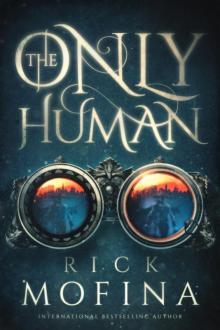 The Only Human
The Only Human Tom Reed Thriller Series
Tom Reed Thriller Series![[Tom Reed and Walt Sydowski 04.0] No Way Back Read online](http://i1.bookreadfree.com/05/tom_reed_and_walt_sydowski_04_0_no_way_back_preview.jpg) [Tom Reed and Walt Sydowski 04.0] No Way Back
[Tom Reed and Walt Sydowski 04.0] No Way Back Missing Daughter
Missing Daughter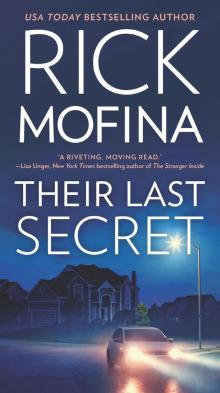 Their Last Secret
Their Last Secret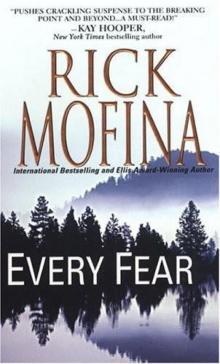 Jason Wade - 02 - Every Fear
Jason Wade - 02 - Every Fear In Desperation
In Desperation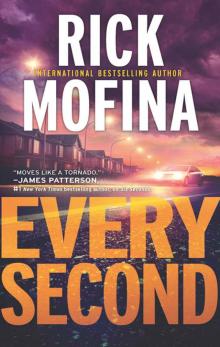 Every Second
Every Second Full Tilt
Full Tilt Search for Her
Search for Her The Last Pursuit
The Last Pursuit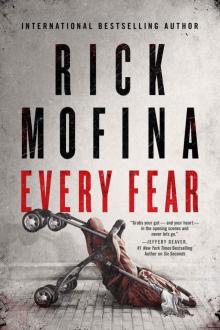 Every Fear
Every Fear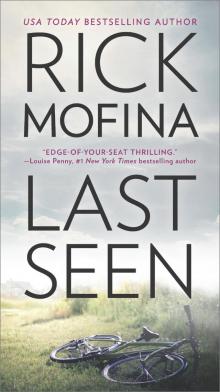 Last Seen
Last Seen The Panic Zone
The Panic Zone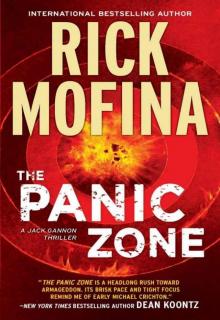 The Panic Zone jg-2
The Panic Zone jg-2 Free Fall
Free Fall Blood of Others
Blood of Others![[Jason Wade 02.0] Every Fear Read online](http://i1.bookreadfree.com/i1/03/31/jason_wade_02_0_every_fear_preview.jpg) [Jason Wade 02.0] Every Fear
[Jason Wade 02.0] Every Fear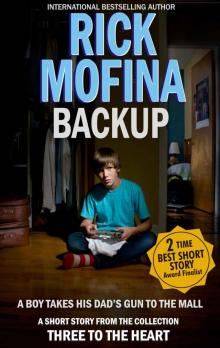 Backup
Backup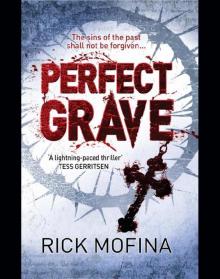 Perfect Grave
Perfect Grave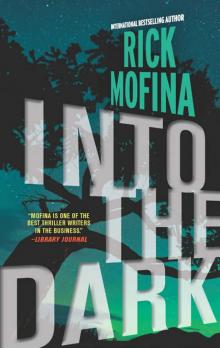 Into the Dark
Into the Dark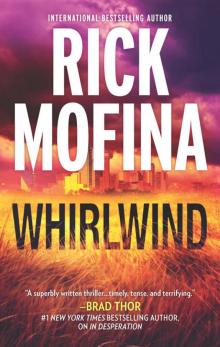 Whirlwind
Whirlwind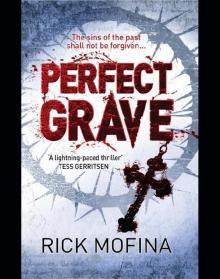 Perfect Grave jw-3
Perfect Grave jw-3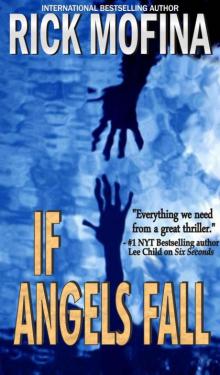 If Angels Fall (tom reed and walt sydowski)
If Angels Fall (tom reed and walt sydowski) Six Seconds
Six Seconds If Angels Fall
If Angels Fall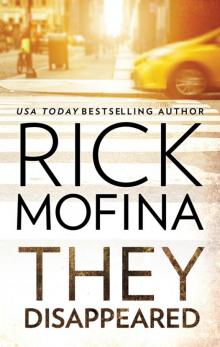 They Disappeared
They Disappeared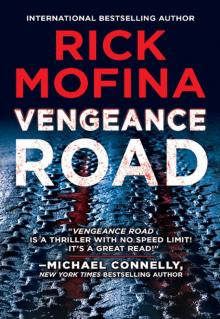 Vengeance Road
Vengeance Road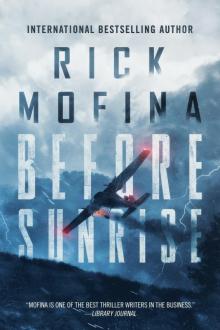 Before Sunrise
Before Sunrise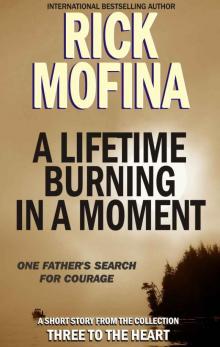 A Lifetime Burning in a Moment
A Lifetime Burning in a Moment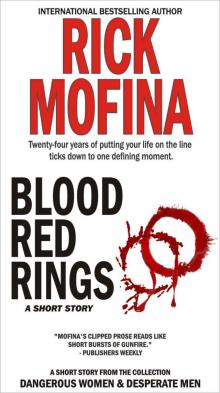 Blood Red Rings (Dangerous Women & Desperate Men)
Blood Red Rings (Dangerous Women & Desperate Men) As Long As We Both Shall Live (Dangerous Women & Desperate Men)
As Long As We Both Shall Live (Dangerous Women & Desperate Men)![[Tom Reed and Walt Sydowski 01.0] If Angels Fall Read online](http://i1.bookreadfree.com/i2/04/12/tom_reed_and_walt_sydowski_01_0_if_angels_fall_preview.jpg) [Tom Reed and Walt Sydowski 01.0] If Angels Fall
[Tom Reed and Walt Sydowski 01.0] If Angels Fall Cold Fear
Cold Fear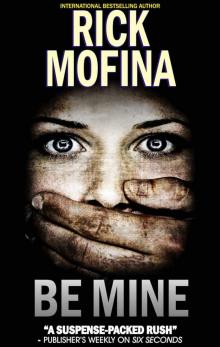 Be Mine
Be Mine Three Bullets To Queensland
Three Bullets To Queensland